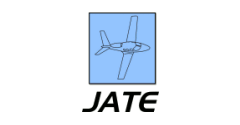Abstract
This paper presents the characteristics of unmanned aircraft system (UAS) sightings and discusses these characteristics in the context of airport safety using airport operational data. An unmanned aircraft in the vicinity of a commercial airport may be a potential threat to aircraft operations, and may result in operational and economic impacts if it causes an airport delay or shutdown. To ensure a record of UAS activity, the Federal Aviation Administration collects and publishes a UAS Sightings Report. This study analyzed UAS sightings and found that they vary by time of year and time of day, with more sightings in the summer and during the daytime. While all kinds of aircraft may be affected, pilots of general aviation aircraft report more UAS sightings, although overall only 3.3 percent of sightings required the pilot to take evasive action. Only 9.8 percent of UAS sightings occurred at or below 400 feet and 57 percent occurred within five miles of an airport, and sightings are more likely to be reported close to large and medium hub airports. States with a large population (such as California and Florida) and airports in big cities have more UAS sightings. The airports with the most UAS sightings are LaGuardia (LGA), Los Angeles (LAX), John F. Kennedy (JFK), and O’Hare (ORD).
Recommended Citation
Wang, Cheng and Hubbard, Sarah M.
(2021)
"Characteristics of Unmanned Aircraft System (UAS) Sightings and Airport Safety,"
Journal of Aviation Technology and Engineering:
Vol. 10:
Iss.
2, Article 2.
Available at: https://doi.org/10.7771/2159-6670.1238


